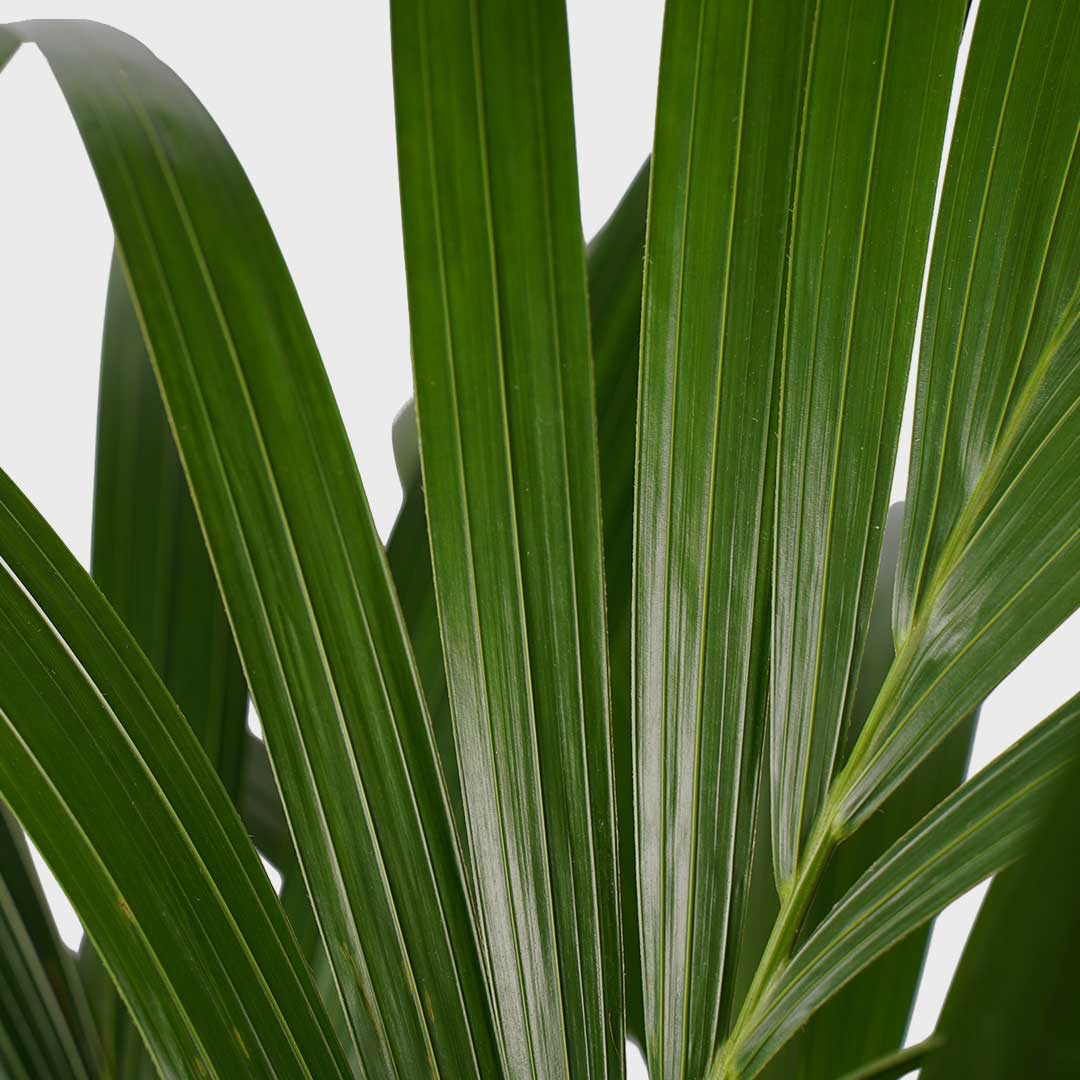
Deliver to
Europe
 English
EnglishYou can recognize the Kentia palm by its long and lush leaves with beautiful foliage. The leaves give the illusion of having a miniature-sized palm tree inside your house! As a beginner to plants, Howea Forsteriana, known as Kentia Palm, is the perfect indoor plant to start with. The Kentia palm can tolerate a little neglect making it a plant with a low maintenance nature. They can grow as tall as around 120 metres in nature and around 3,5 metres indoors.


Medium light
Water once a week
Non-Toxic
Air-purifying
The Kentia palm likes to be placed in a spot with lots of light. It is best to place the plant in medium bright light or partial shade. The Kentia palms prefers a spot next to a window on the west or east. A spot near the south is of course also possible. Make sure that the plant is at least 2 metres away from the window. Don't give Kentia palms direct sunlight as the leaves won't tolerate the heat.
Kentia Palm prefers a balanced level of moisture, not too wet nor too dry. Therefore, the best way to check if your plant needs water is to check the top centimeters of the soil. If it's dry, then you can water the plant. From spring to summer you can add some water every 5 days. From autumn to winter every 10 days is enough.
The Kentia palm uses a lot of energy from spring onwards to make new leaves. As a result, the plant needs extra nutrients. You can provide these nutrients by means of plant nutrition. We recommend giving plant nutrition once every two weeks. From spring until autumn. After autumn and in winter it is better not to give extra nutrients. In the winter, plant nutrition can actually be harmful for the Kentia palm!
Repotting the Kentia palm isn't necessary every year. We recommend repotting the Kentia palm every 2 years. This gives the plant new nutrients and more room for root growth. The airier soil is also very good for the water flowing through. The best period to repot is spring.
The ideal temperature for a Kentia palm is typically between15 to 24 degrees Celsius. It thrives in average room temperatures commonly found in homes and offices. Kentia palms can tolerate slightly higher or lower temperatures as well, but extreme temperatures of temperature changes can affect their growth and overall health.
As the Kentia palm ages, lower leaves may naturally turn yellow or brown and eventually die. These dying leaves can be pruned off at the base of the stem. Removing these fronds enhances the overall appearance of the plant and prevents the risk of fungal or pest issues.
In addition to being non-toxic, the Kentia does not suffer from any diseases too. Although pests can occur on all types of plants. It is therefore good to check the plant regularly. In case of vermin, you can always use a pesticide.


If the environment of the Kentia palm is too dry the tips may turn brown. If you notice these brown spots then it is wise to water the plant on a regular basis.
As well as dry or cold air draughts can also be a reason for brown tips.
If you notice that the leaves are drooping and turning yellow it could be due to too much water. If the Kentia palm gets more water than it requires the roots can suffocate. In addition root rot can occur.
Pruning the Kentia palm is certainly possible. Kentia palms grow new leaves at the top. It is therefore not a bad idea to prune away the older lower leaves at the bottom. These leaves can easily be removed with a pair of pruning shears or scissors. The same applies to brown tips, which can also be removed.
As indoor plants Kentia palms can grow up to 2.5 metres. In nature the Kentia palm grows to about 12 metres. Kentias are slow growers so it can take years for them to reach their maximum height.